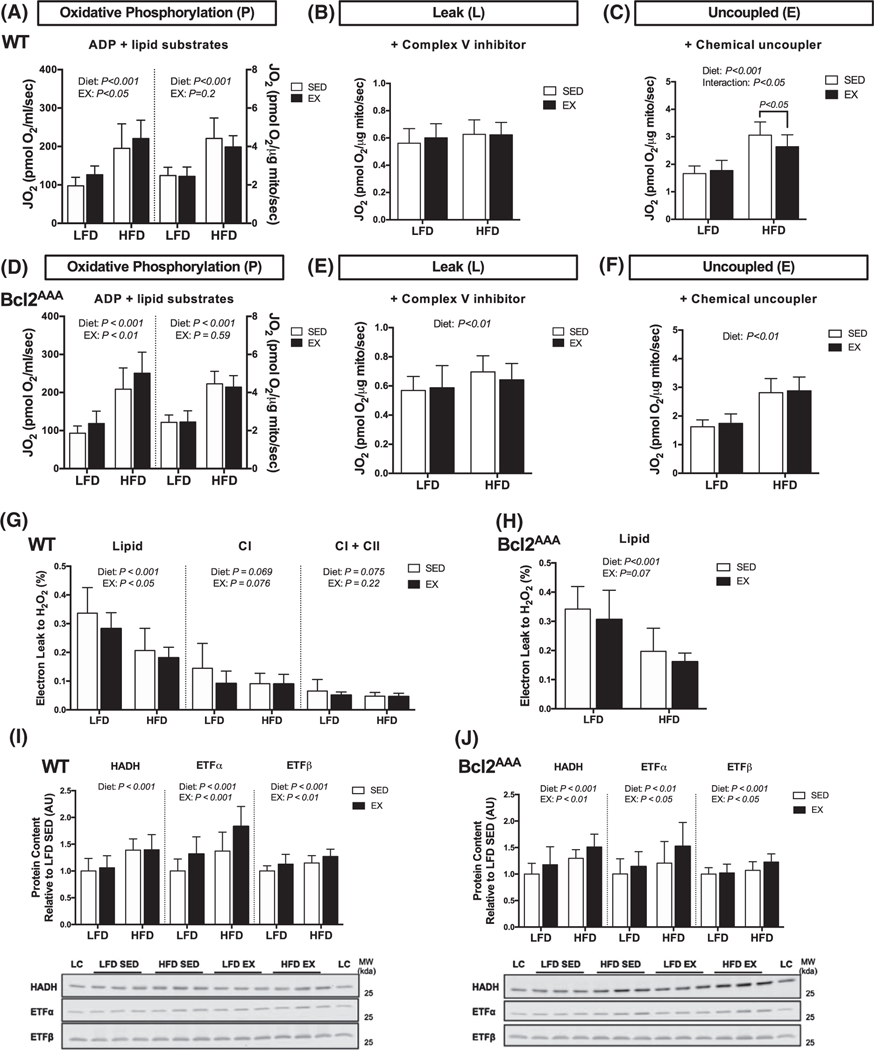FIGURE 5.
Independent effects of exercise and high-fat feeding to induce mitochondrial lipid oxidation adaptations. Quadricep muscles were collected after a 4-h fast and 36 h after exercise from wild-type and Bcl2AAA mice given a low-fat (LFD) or 60% high-fat diet (HFD) for 12 wk and performed 8 wk of exercise training (EX) or remained sedentary (SED). A and D, Respiration of isolated mitochondria. Lipid substrate-linked oxygen consumption (JO2) during oxidative phosphorylation (P) with non-limiting ADP. Rates of JO2 are expressed as absolute units (pmol O2/sec; left) and relative to protein content (pmol O2/μg protein/sec; right). B and E, Lipid substrate-linked oxygen consumption (JO2) during leak (L) respiration after the addition of oligomycin, a complex V inhibitor. Rates of JO2 are expressed as relative units (pmol O2/μg protein/sec). C and F, Lipid substrate-linked oxygen consumption (JO2) during uncoupled electron transfer system (E) respiration after the addition of the chemical uncoupler, FCCP. Rates of JO2 are expressed as relative units (pmol O2/μg protein/sec). G and H, Electron leak to H2O2 calculated from H2O2 emission during oxidative phosphorylation and expressed as a percentage of oxygen consumption. I and J, Protein content of HADH, ETF subunits α and β, expressed as arbitrary units relative to LFD SED values with representative blot images. Full blot images and Ponceau stain of membranes are in supplemental data. Data are means ± SD. Two-way ANOVA tested for effects of diet and exercise. P values are main effects or post-hoc comparisons when significant interactions effects were observed. Group sizes are n = 12–17, except panels (C and F) n = 11–13

